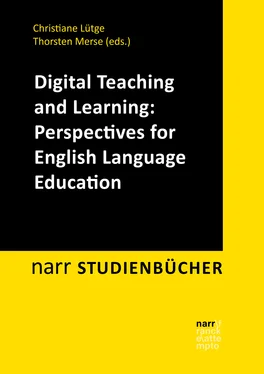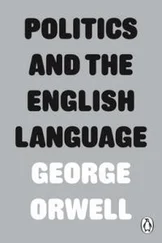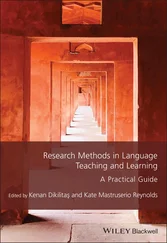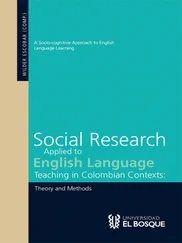The second section of this edited volume offers intensive and reflective Digital Dialogues in Cultural Learning and Teaching with Texts. The articles collected here speak to each other to shed light on digital innovations in English education that are associated with cultural and global learning, issues of identity, and the move from traditional print literature to digital textualities. The design of these articles is inherently dialogic in that they connect and update established fields of EFL theory with digital perspectives. In the sixth article of this book, Grit Alterseeks to diversify cultural learning in the digital age. She takes a detailed look at how digitalization increasingly changes social and cultural contexts, and how digital and social media as spaces of interaction, entertainment and information reposition users to ‘produsers’ of cultural content. She further explores cultural practices associated with participatory and digital cultures, and suggests a timely concept of digital-cultural competences by expanding on Byram’s influential model of intercultural competences. In the contribution that follows, Stefanie Fuchsengages deeply with the issue of ‘doing identity’ and ‘doing gender’ in digital spaces. She argues that the digital world has become a central space for performing identities, and provides compelling reasons why this development is also relevant for English language education. She then couples her theoretical overviews with detailed teaching ideas that harness the value of digital media for learners to approach identity-related aspects. Theresa Summercontinues and expands on these trajectories by addressing how learners can be supported to become competent citizens in a world marked by digital and global interconnections. Her focus lies on presenting current models of digital competence and global competence with a view to unifying both strands into a framework of digital-global competence that she calls DigCompGlobal. A lesson sequence focusing on the topic of sustainability illustrates how digital and global competence can be promoted in practice. In the next article, Christian Ludwigoffers surprising insights into teaching traditional print-based literature with digital media for the benefit of engaging learners in literary experience. He presents a range of literary genres and concrete examples of literary texts, and how digital tools and the participatory web culture can serve to tease out their literary potentials. He concludes with a re-evaluation of available concepts of literary competences in light of digital media. Finally, this section is rounded off with a contribution by Christiane Lütge, Thorsten Merseand Michelle Stannard, who engage with the diversity of digital textualities found in learners’ digital lifeworlds. They begin with a reflection of what counts as ‘text’, and present multimodality and interactivity as central features of digital textualities. They continue to scrutinize social media, digital literatures and virtual realities as examples of digital textualities, and evaluate their implications for classroom practices that tie in with the social and communicative practices typical of digital media.
This work and study book concludes with an outlookon how to get started with digital teaching and learning in English language education. For this purpose, Claudia Mustrophcondenses the classroom implications and reflective endeavors of this book into a practical view on how to foster principal learning goals of ELT in a digital manner. She also addresses important requirements for digital education with regard to the teacher, the infrastructure in school, and curricula. This article is helpful for teachers to match digital activities appropriately with their teaching context, including low-tech and no-tech environments.
Before you dive fully into the diverse articles of this edited volume, we are proud to present an exclusive interview with Nicky Hocklythat we conducted after a guest lecture on digital literacies she delivered at the University of Munich (LMU). Nicky Hockly is an esteemed global expert on digital education in English Language Teaching, and the Director of Pedagogy of The Consultants-E. She is an international plenary speaker, and regularly trains teachers all over the world. Nicky Hockly has written several prize-winning methodology books about new technologies in language teaching. Her most recent books are Focus on Learning Technologies (2016) and ETPedia Technology (2017). She is also widely known for her collaboration with Mark Pegrum and Gavin Dudeney on conceptualizing and researching digital literacies. In the interview, she spoke about their work on digital literacies, retraced historic developments in digital education, and reflected on the digital changes currently underway in language education.
In Dialogue with Nicky Hockly
Nicky Hockly
For this interview, the editors of this volume had the chance to speak with Nicky Hockly, a global expert on digital language education and Director of Pedagogy of The Consultants-E. In this dialogue, Nicky Hockly offered insights into the past and future of digital education and her current work on digital literacies.
Christiane Lütge and Thorsten Merse: From 1997 to 2002, you worked as the Academic Director of one of the first fully online MA programmes for English Language Teaching, and you have paved the way towards digital education ever since. In your professional experience, what were the ‘digital hopes’ you had in 1997?
Nicky Hockly: Fully online degree programmes were relatively new back in 1997, when I started teaching online. Although we had an adequate LMS (Learning Management System), the emphasis was still very much on asynchronous online communication. For example, our MA students would typically read texts and then take part in moderated forum discussions. There was some multimedia available in the form of audio and video, but it was not as easy to produce then as it is now. Our students accessed course content via desktop or laptop computers – mobile technology was still in its infancy, and Internet connected mobile devices only started to make an appearance in the early 2000s. In our online MA programme we did hold regular synchronous (real-time) small-group tutorial discussions, but the only way we could do this was via text. We had to use MSN Messenger, as tools like Skype were simply not around. You can imagine how slow and cumbersome it was to hold tutorial discussions in real-time via text with groups of up to 10 MA students who had plenty of interesting and complex things to say. I experienced at first hand all of the typical text-related communication issues, such as topic decay (students going off topic in their discussions), overlapping turns (students typing responses over each other) and lag (long pauses while students typed out whole paragraphs). And students who were proficient typists had the advantage over those (like myself) whose typing skills left a lot to be desired! We developed quite detailed ‘chat protocols’ to manage these real time text chats, so that these group text chats worked as well as possible. But it was not ideal to have to hold real-time tutorials via text chat.
My biggest hope back then was that we could find some way of communicating via audio in real-time via the Internet. Although telephone conference calls already existed, these were far too expensive for us to seriously consider for our students. Our MA students were based all over Europe and in Latin America, so it simply wasn’t feasible cost-wise to use telephone conference calls. Skype came along in 2003; these sorts of VoIP (voice over Internet Protocol) tools marked a revolutionary moment by making real-time audio communication in online teacher development accessible to all. I was very lucky to experience the ‘before’, ‘during’ and ‘after’ of real-time computer-mediated communication. ‘Before’ we had to use text chat, the ‘during’ phase enabled us to use audio via VoIP tools, and the ‘after’ phase consists of videoconferencing made possible by video compression and high-speed internet. Widespread affordable videoconferencing was a distant dream back in 1997! And now, thankfully, it’s commonplace.
Читать дальше












